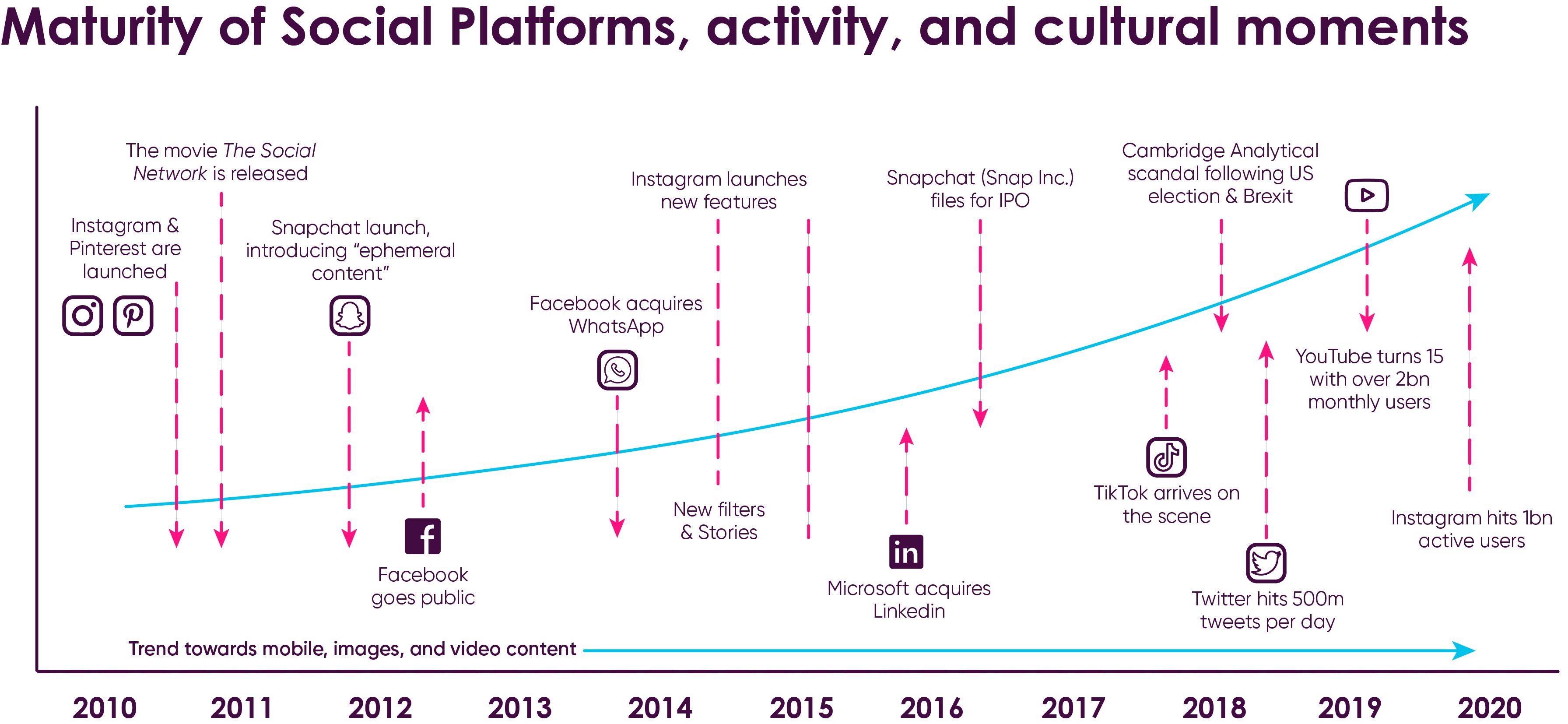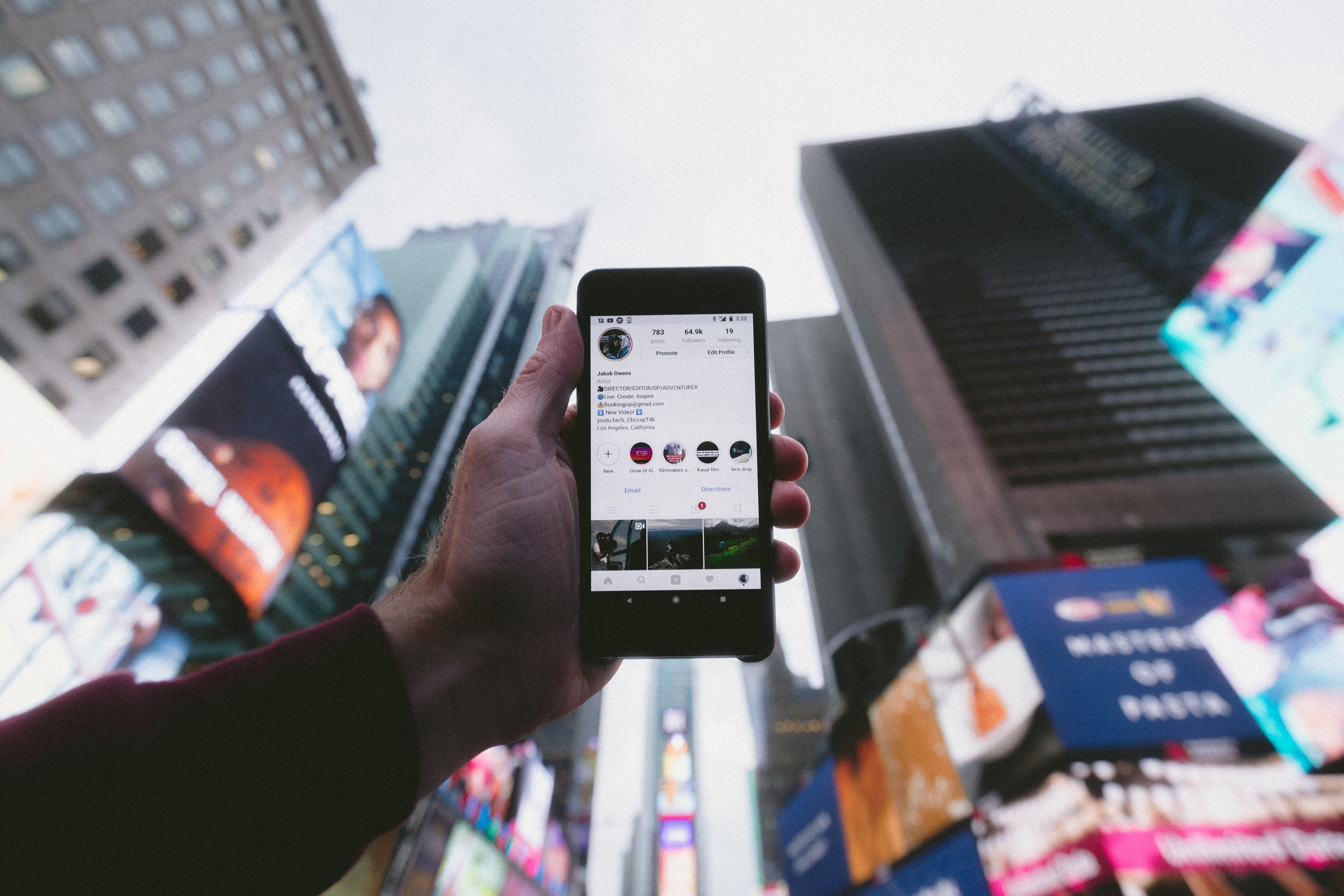In recent years, social media has grown from a simple communication tool to stay in touch with friends and family to a powerful channel influencing consumer behaviour in e-commerce. With the rise of shopping online coinciding with the popularisation of “social commerce” on platforms like TikTok, Instagram, and Facebook, consumers can now discover, research, and buy products on the social media apps where they are already spending an average of 2.5 hours per day.
To compete in the modern e-commerce space, it is essential for businesses to understand this dynamic and adapt their strategies accordingly. In this guide, Omnia will discuss the current landscape at the intersection of social media and e-commerce, discuss its impact on consumer experience and behaviour, and offer some ideas for how brands and retailers can capitalise on the opportunity of social commerce.
The growing importance of social media in e-commerce
In the early 2000s, the first mainstream social media platforms like Myspace and Facebook focused heavily on text content, with users sharing content with friends or followers in the form of written updates and statuses. With the launch of Instagram and Snapchat, the industry started to trend more toward mobile, images, and video content, and this has only continued with the explosive growth of TikTok.

Source: https://www.smartinsights.com/ecommerce/ecommerce-strategy/social-commerce-trends/
In recent years, social media platforms like TikTok, Instagram, and Facebook have increasingly become popular avenues for online shopping and product research, a phenomenon referred to as “social commerce”. According to Accenture, social commerce is set to grow three times faster than traditional commerce in the next few years, reaching $1.2 trillion by 2025. This growth will be driven primarily by Gen Z and Millennials, who will make up 62% of global social commerce spending by the same year.
However, purchasing products through social media is not the only way the platforms impact online shopping; in fact, this is a newer development. Platforms are also used to research or gain inspiration:
- 75% of all internet users use social media to research products
- 28% use social media to find inspiration for things they can do or purchase
- 23% use social media to check what content is being posted by their favourite brands
Unlike traditional e-commerce giants like Amazon, which excel when consumers know what they want to buy, social media offers a unique browsing experience that allows users to "window shop” online and discover new products through engaging content.
Talk to one of our consultants about social commerce and pricing.

What are consumers buying through social commerce?
An Accenture report predicted by 2025, the highest number of global purchases through social media would be in the categories of clothing (18%), consumer electronics (13%), and home decor (7%). Beauty and personal care is also predicted to grow quickly in key markets, and fresh food and snack items will be a sizable category (13%), although those sales are almost exclusive to China.
E-commerce customer experience on social media
The shopping experience on social media can differ from traditional e-commerce. While mobile makes up for approximately 43% of e-commerce activity, social media platforms are used on mobile devices about 80% of the time. This has led to an increased focus on delivering seamless and enjoyable shopping experiences tailored for smaller screens, as well as features allowing consumers to buy products without app switching or leaving the platform.
Instagram and TikTok: The leading platforms in social commerce
While most social media platforms include some sort of shopping capability, two of the most popular for social commerce are Instagram and TikTok.
Instagram’s shopping section, which allows users to purchase directly from the app, took off starting in 2019. By now, users are able to access a shop on the company’s profile and buy via stickers in Instagram Stories, links in photo and video posts, and through ads shown in their feed. Instagram Shop and Instagram Checkout now have more than 130 million monthly users and there are more than 25 million businesses on the app.
TikTok is one of the newest large-scale social media platforms, having only launched in 2018, but its rapid growth should make all businesses pay attention to the e-commerce opportunity it presents. Within its first year, TikTok reached 500 million monthly active users, and was the most downloaded app globally in 2022 with 850 million downloads, followed by Instagram and WhatsApp. While TikTok’s user base heavily skews toward Gen Z, adoption is growing with millennials, and these are the two generations that make up the majority of social commerce spending. Two out of three users say they are likely to buy something while on the platform, and 55% use TikTok to research new brands or products.
How social media has changed consumer behaviour for e-commerce
Even outside of true social commerce, where a customer buys something directly through the social media platform, the advent of social media has dramatically impacted consumer behaviour and decision-making in e-commerce overall:
- Research and inspiration: As mentioned previously, many consumers use social media to research products and find inspiration for what to buy. 87% of shoppers say they search or consult with social media before purchasing any item and 22% of consumers prefer social media as their channel to discover new products.
- Research online, purchase offline: This phenomenon, abbreviated as ROPO, is important for any business with an omnichannel strategy to watch. It refers to a consumer behaviour where shoppers research the product online, such as through social media, but make the final purchase at a physical store.
- Reviews and recommendations: Consumers are also looking at user-generated content such as reviews, ratings, and recommendations, which can serve as powerful motivators to buy. While influencer marketing is certainly widely used, consumers say they are most likely to take product recommendations from everyday users like friends and family (37%) versus subject matter experts (25%), celebrities (7%), social media influencers (6%) or even the brand’s social media account (8%).
- Discounts and promotions: Just like a funny video or engaging news story, discount codes and flash sales can go viral on social media, spreading rapidly and creating a sense of urgency around purchases.
E-commerce social media stars: Brands who get it right
Some brands just get it when it comes to social media and social commerce. Below are a few glowing examples of those who have successfully leveraged social media to drive consumer behaviour and sales:
Glossier, CLUSE and Snug
Glossier is what’s known as a digital native vertical brand, or DNVB, meaning it was born online and is a fully D2C business. Social media helped the company grow to more than $100 million in revenue within four years of launching back in 2010. A self-described content-first company, Glossier has a heavy social media presence with content created by influencers and followers alike, and has the mantra “Glossier is listening”, encouraging customers to help shape products and packaging.
Founded in the Netherlands in 2009, CLUSE is a fashion brand that started e-commerce operations in 2014. The brand’s extensive use of Instagram, its social commerce features, and user-generated content has been key to the brand’s growth.
Snug is a sofa-in-a-box company based in London. Much of its £31.6 million (about €35.9 million) revenue in 2021 was driven through social media, especially Instagram and Pinterest. Snug’s founder and CEO Rob Bridgman told Econsultancy that “people spend more time researching which sofa to buy than which house,” which is why the company focuses on making the purchase simple and accessible via social media.
Social media will continue to play a key role in the customer’s e-commerce journey
Using social media to market and directly sell e-commerce products comes back to a basic business principle: Meet your customers where they are. With the average user already spending nearly 2.5 hours per day on social media, giving them the convenience of seeing a recommendation or making a purchase right where they are is powerful. As customers grow more and more accustomed to this convenience, the area of social commerce is only expected to grow.




